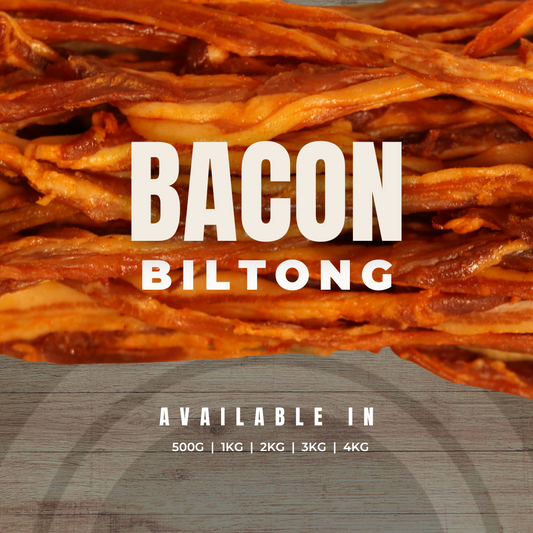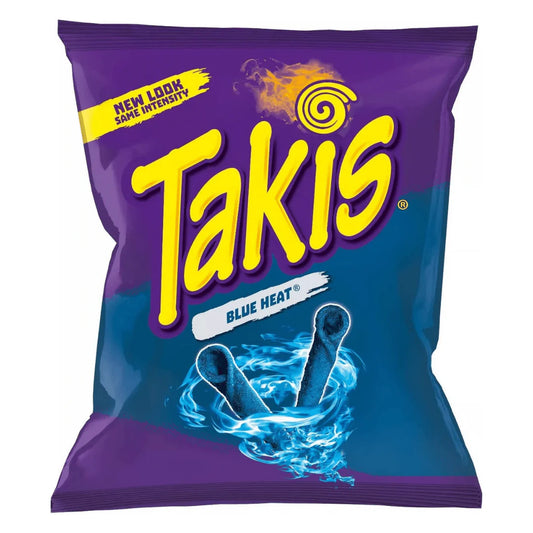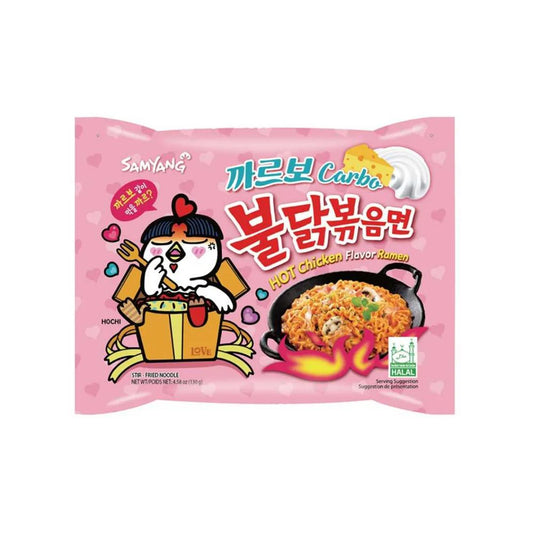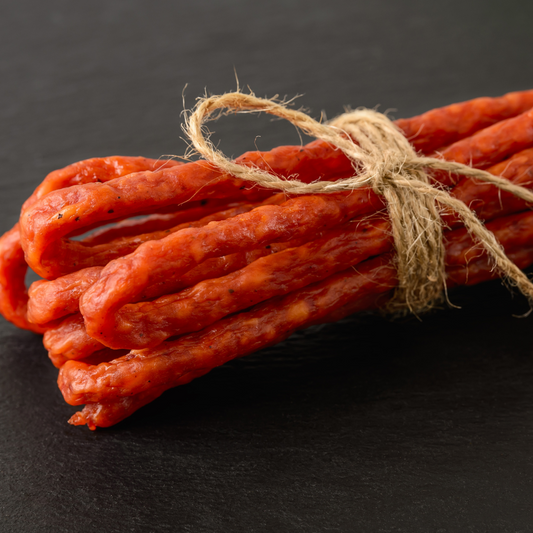How Is Biltong Made? The Ultimate Guide from Start to Finish!
Share
Welcome to the World of Biltong Craftsmanship
If you've ever had the pleasure of savoring the savory, chewy delight of biltong, you're no stranger to its unparalleled flavor and texture. Biltong, a South African culinary masterpiece, is not just any dried meat; it's a taste of tradition and craftsmanship that has been perfected over generations. In this ultimate guide, we'll take you on a journey through the fascinating process of how biltong is made, from start to finish.
Biltong Boytjies, your trusted source for premium biltong in South Africa, is here to unravel the secrets behind this culinary art form. We invite you to step into our world, where passion, precision, and patience converge to create a snack that's as South African as it gets.
The Craft of Biltong
Imagine rich, succulent strips of beef, marinated to perfection with a blend of aromatic spices, and then carefully air-dried to intensify the flavors. This is the essence of biltong, and it's more than just a snack; it's a tradition deeply rooted in South African culture.
But how is this delectable treat crafted, and what makes it so special? Join us as we explore every step of the process, from selecting the finest meat to ensuring the ideal drying conditions. By the end of this journey, you'll have a profound appreciation for the artistry and craftsmanship that go into every bag of biltong.
Throughout this guide, we'll delve into the intricacies of biltong making, revealing the tools and techniques used, as well as sharing some expert tips and insights. We'll also discuss the critical role of hygiene and quality control in producing biltong that's consistently exceptional. And if you ever encounter any hiccups along the way, don't worry; we've got you covered with troubleshooting advice.
So, are you ready to uncover the secrets of making perfect biltong? Join us as we embark on this mouthwatering adventure, where we'll explore the art, science, and craftsmanship behind every bite. Get ready to become a biltong aficionado!
Section 1: Selecting the Finest Meat
Before the magic of biltong-making begins, one must start with the finest meat. The selection process is a crucial first step in ensuring the biltong's quality and flavor. At Biltong Boytjies, we believe that using top-tier meat is the foundation of crafting exceptional biltong.
The Meat Matters: A, B, or C Grade Beef
Quality biltong begins with quality meat, and not all beef is created equal. When you embark on your biltong-making journey, you'll often encounter distinctions like A Grade, B Grade, and C Grade beef. These classifications represent the quality and characteristics of the meat.
A Grade Beef: This is the top tier, characterized by its superb tenderness and minimal fat content. A Grade beef yields the best biltong due to its lean and flavorful nature. It's the preferred choice for many biltong enthusiasts, including us at Biltong Boytjies.
B Grade Beef: Slightly less tender than A Grade, B Grade beef may have a bit more fat, but it's still suitable for biltong-making. It offers a balance between flavor and tenderness, making it a popular choice for those looking to experiment with different textures.
C Grade Beef: While C Grade beef may not match the tenderness of A and B Grade, it has its place in biltong-making. It's often used for biltong sticks and biltong products that require a longer drying time. The slightly higher fat content can lend a unique taste to the final product.
When choosing meat for biltong, look for lean cuts with minimal fat. Fat can spoil and cause biltong to go rancid, so it's best to trim it away. We recommend using cuts like silverside, topside, or rump. These cuts are not only flavorful but also well-suited for the drying process.
The Marination Process
Once you've selected the perfect meat, the next step involves marination. This is where the biltong gains its distinct taste and aroma. The marination process typically involves a blend of spices that can include coriander, pepper, salt, and various secret family recipes.
The marination not only adds flavor but also serves as a preservative, inhibiting bacterial growth during the drying process. It's this combination of spices and marination that gives biltong its mouthwatering, aromatic qualities.
Expert Tip: Quality Over Quantity
When making biltong at home, it's crucial to prioritize quality over quantity. Using the best meat and spices you can find will undoubtedly elevate your biltong game. While shortcuts may save time, the authentic biltong experience lies in the careful selection and preparation of ingredients.
In the next section, we'll dive deeper into the marination process and explore the spices that give biltong its signature taste. Get ready to unleash your inner biltong craftsman!
Section 2: The Art of Marination
Welcome to the heart of biltong-making – the marination process. This is where the magic truly happens, as the carefully selected spices and flavors transform ordinary meat into a savory delight. At Biltong Boytjies, we believe that mastering this art is the key to crafting extraordinary biltong.
The Spice Symphony
The marination of biltong involves a captivating blend of spices, each contributing to the overall taste profile. While the exact combination can vary from recipe to recipe, there are a few key players that make up the core of biltong's flavor:
Coriander: Perhaps the most essential spice in biltong-making, coriander seeds bring a citrusy, earthy aroma to the mix. Ground coriander coats the meat, infusing it with a fragrant essence that's unmistakable.
Black Pepper: Adding a gentle kick of heat and depth, freshly ground black pepper complements the coriander beautifully. It contributes both spice and a rich, bold flavor to the biltong.
Salt: Salt isn't just a flavor enhancer; it's also a critical preservative. It helps prevent spoilage during the drying process and ensures your biltong stays fresh for longer.
Secret Ingredients: Many biltong recipes include a secret ingredient or two. These unique additions are what set one biltong recipe apart from another. While we can't reveal all our secrets, experimenting with additional spices like paprika, garlic powder, and chili flakes can create intriguing variations. Some recipes even incorporate sauces like Worcestershire sauce or BBQ sauce, along with a splash of brown vinegar for a tangy twist.
Ready-Made Spice Mixes: For those who prefer convenience, there are ready-made biltong spice mixes available from reputable companies like Crown National and Freddy Hirsch. These mixes are crafted by experts and can save you time while ensuring a delicious outcome.
The Marination Ritual
The marination process itself is a ritualistic experience for biltong enthusiasts. It involves coating the selected meat with the spice mixture to create a flavorful crust. Here's a simplified step-by-step guide:
-
Selecting the Cut: Begin with the choice of meat. While beef is the traditional go-to, biltong can also be made from game meat or even chicken. Each meat brings its unique flavors to the table.
-
Cutting the Meat: Decide on the style of biltong you wish to create. You can choose to cut the meat into slabs for biltong slabs, perfect for slicing into thin pieces. Alternatively, cut it into strips for classic biltong sticks. To make droëwors (dry sausage), you'll need sheeps' casings to shape the meat into sausage form.
-
Spice Coating: In a mixing bowl, combine your ground coriander, black pepper, salt, and any secret ingredients or sauces you've selected. Adjust the proportions to suit your taste, but remember that coriander should always dominate. Coat the meat generously with this spice blend. Ensure that every nook and cranny is covered, as this is where the flavor will develop.
-
Time for Rest: Once coated, place the marinated meat in an airtight container or resealable bag. Allow it to rest in the refrigerator for at least 6-12 hours, although some prefer marinating for up to 24 hours for a deeper flavor.
Expert Tips: A Flavorful Journey
-
Experiment with Spice: Don't hesitate to tweak the spice mixture to match your taste preferences. Add a touch of smoked paprika for a smoky twist or extra chili flakes for a spicy kick.
-
Temperature Control: Maintain a consistent temperature throughout the marination process. Refrigeration is crucial to inhibit bacterial growth and ensure food safety.
-
Busting a Myth: Myth: Hanging biltong in a dark room is essential. Reality: While darkness is common, it's the temperature, humidity, and airflow that truly matter. You can create great biltong in a well-lit room with the right conditions.
The marination stage sets the tone for your biltong's flavor journey. In the next section, we'll explore the critical factors of drying, where the transformation from marinated meat to biltong truly occurs. We'll discuss the importance of time, airflow, temperature, and humidity, as well as the specialized equipment needed for this phase. Stay tuned for more biltong-making wisdom!
Section 3: The Transformation: Drying Biltong to Perfection
Drying is where the biltong-making process takes a fascinating turn, as the marinated meat slowly transforms into the mouthwatering delicacy we all know and love. In this section, we'll explore the pivotal role that time, airflow, temperature, and humidity play in the drying room, where the artistry of biltong truly shines.
The Drying Room: A Controlled Environment
Creating the ideal drying environment is a crucial step in producing exceptional biltong. This room is more than just a space; it's a controlled chamber where science and craftsmanship merge to produce this beloved South African snack. Here are the key factors that contribute to the perfect drying room:
Time: Patience is a virtue in biltong-making. The drying process can take anywhere from a few days, aand up to a week, depending on various factors. During this time, the meat gradually loses moisture, intensifying its flavors and creating the characteristic biltong texture.
Airflow: Proper airflow is essential to maintain consistent drying conditions. Adequate ventilation ensures that moisture is carried away from the meat, preventing the growth of harmful microorganisms. It's a delicate balance – too much airflow can dry the biltong too quickly, while too little can lead to mold growth.
Advanced Airflow Management: The drying room needs to have a top fan equipped with filters for clean air, providing positive airflow from one side of the room to the other, and expelling it with an extraction fan at a controlled pace. Additionally, several oscillating fans evenly distribute the air, avoiding uneven patches and ensuring constant movement throughout the room. This meticulous management guarantees that each piece of meat is exposed to the same drying conditions.
Temperature: Temperature control is critical. The drying room should be kept at a consistent, room temperature, ideally around 20°C. This helps prevent the growth of unwanted bacteria and ensures that the meat dries slowly, allowing the flavors to develop fully.
Advanced Temperature Regulation: Advanced heaters can be used to maintain and stabilize the temperature precisely where it's needed. Higher temperatures around 25-27 degrees Celsius increase the sweating and pace of the drying process. Normal temperatures typically consist of about 20-25 degrees Celsius. Anything less may result in slow and tedious drying; you can probably go as low as 15 degrees celsius if you really have to.
Humidity: Balancing humidity is an art. Biltong thrives in an environment with moderate humidity levels, ideally between 50-60%. This range encourages the meat to dry evenly and prevents it from becoming overly dry and brittle.
Humidity Management: Humidifiers can be employed to maintain humidity levels within the desired range. Achieving the right balance between time, airflow, temperature, and humidity is essential. It ensures that biltong isn't overly hard and leathery on the outside while remaining raw in the middle.
Tools of the Trade
To create the perfect drying environment, you'll need a few essential tools:
-
Drying Racks: These are used to hang the marinated meat for drying. They allow for proper airflow around each piece, ensuring even drying.
-
Fans: Placed strategically in the drying room, fans help maintain consistent airflow. They can be adjusted to control humidity levels and ensure an even drying process.
-
Thermometer and Hygrometer: These instruments are crucial for monitoring temperature and humidity. Regular checks help you make adjustments as needed to maintain the ideal conditions.
Issues and Fixes
Like any craft, biltong-making has its share of challenges. Here are some common issues that may arise during the drying process, along with potential solutions:
Load Shedding: In South Africa, load shedding (rolling blackouts) can disrupt the drying process. To counter this, consider investing in an inverter or generator to keep your drying room running consistently.
Mold Growth: If you notice mold on your biltong, it's essential to address it promptly. Clean your drying room thoroughly, improve hygiene practices, and ensure better airflow, temperature, and humidity control in the future.
Uneven Drying: If some pieces of meat dry faster than others, you might need to rearrange them on the drying racks to ensure even airflow. You can also adjust the fans to improve ventilation.
Over-Drying: If your biltong becomes overly dry and tough, you can try rehydrating it slightly by placing it in a sealed container with a damp cloth for a short period. Just be careful not to overdo it.
Remember, each batch is an opportunity to refine your skills and explore new flavors. In the next section, we'll delve into the final steps: removing the meat from the drying racks, slicing it into delicious pieces, and savoring the fruits of your labor.
Stay tuned for more biltong wisdom and culinary delights!
Section 4: Hygiene and Quality Control
In the world of biltong production, maintaining impeccable hygiene and quality control is paramount. Ensuring that every batch of biltong is not only delicious but also safe to consume is a non-negotiable aspect of the process. Here, we delve into the essential elements of hygiene and quality control in biltong-making.
A Clean Start: Sanitizing the Workspace
Before embarking on the biltong-making journey, it's crucial to prepare the workspace meticulously. Here's how to ensure a clean and safe environment:
-
Sanitize Surfaces: Thoroughly clean and sanitize all surfaces, utensils, and equipment that will come into contact with the meat. Use food-grade sanitizers and disinfectants to eliminate any potential contaminants.
-
Hand Hygiene: Handwashing is a critical aspect of maintaining hygiene. Biltong makers should wash their hands frequently, especially when handling meat and spices. Use soap and warm water for at least 20 seconds, ensuring that no residue remains.
-
Aprons and Gloves: Wearing clean, food-safe aprons and disposable gloves helps prevent cross-contamination. Change gloves regularly, especially when transitioning between tasks or handling different ingredients.
-
Hairnets and Caps: For those involved in the biltong-making process, hairnets or caps are essential. These prevent hair from falling into the meat, ensuring a hygienic product.
Quality Ingredients and Meat Selection
The quality of biltong begins with the selection of high-grade meat and top-quality ingredients:
-
Premium Meat: At Biltong Boytjies, we take pride in sourcing only the finest cuts of meat. Quality meat ensures that the biltong is tender, flavorful, and free from undesirable elements.
-
Biltong Spice: Our unique spice blend consists of premium ingredients that complement the meat's natural flavors. This meticulous selection contributes to the signature taste of our biltong.
Temperature Control: Keeping It Cool
Maintaining the right temperature is essential at every stage of the biltong-making process:
-
Processing Room: The processing room where the meat is cut and spiced must be kept at a controlled, cooler temperature. This helps prevent bacterial growth and ensures the meat remains safe for consumption.
-
Cold Storage: After spicing, the meat is placed in cold storage to marinate. This environment maintains the meat's freshness and prevents spoilage. It's crucial to monitor and control the temperature in these storage areas.
Risk Management and Quality Assurance
To uphold the highest standards of quality, biltong makers must be vigilant and proactive in addressing potential risks:
-
Mold and Contamination: Regularly inspect the drying room and the meat for any signs of mold or contamination. In the event of mold, it's essential to address the issue promptly, ensuring that it doesn't affect the entire batch.
-
Load Shedding: In South Africa, load shedding or power outages are not uncommon. Biltong makers should invest in backup power sources like generators or inverters to maintain temperature and airflow consistency during these events.
-
Record Keeping: Detailed record-keeping is a crucial aspect of quality control. Keep records of meat sourcing, spice blends, marinating times, and environmental conditions in the drying room. This documentation aids in identifying and resolving any quality-related issues.
Biltong Boytjies' Commitment to Quality
At Biltong Boytjies, our commitment to quality control and hygiene is unwavering. Our state-of-the-art facilities, equipped with cold storage, processing rooms, and drying rooms, are meticulously maintained to ensure the production of premium biltong.
We adhere to strict quality assurance protocols, from meat selection to spice blending and drying. Our dedicated team is trained in food safety and hygiene practices, ensuring that every batch of biltong that reaches your hands meets the highest standards of quality and safety.
In our next section, we'll explore the potential challenges that can arise during the biltong-making process and provide practical solutions to overcome them. Stay tuned for expert troubleshooting tips and insights.
Section 5: Troubleshooting
Biltong-making is both an art and a science, and like any craft, it comes with its unique set of challenges. In this section, we'll explore some common troubleshooting scenarios that biltong enthusiasts might encounter during the process and provide expert tips, tricks, and myth-busting insights to help you overcome them.
Problem 1: Mold on the Biltong
Expert Tips: If mold forms on your biltong, don't panic. It's a common occurrence, and it can usually be addressed without compromising the entire batch.
-
Prevention Is Key: Maintain strict hygiene practices in your workspace. Cleanliness and proper sanitization can significantly reduce the risk of mold.
-
Increase Airflow: Ensure that there's adequate airflow in your drying room. Mold thrives in stagnant, humid conditions. Use fans to promote air circulation.
-
Adjust Temperature and Humidity: Mold growth is less likely in a controlled environment. Keep your drying room at the right temperature (around 20-27°C) and humidity level (40-60%).
Myth Debunked: Some believe that mold on biltong is always a sign of spoilage. In truth, mold can be harmless and is often only on the surface. It can be safely removed without affecting the biltong's quality.
Problem 2: Uneven Drying
Expert Tips: Achieving uniform drying is essential for consistent biltong quality. Here's how to address uneven drying:
-
Rotate Meat: Periodically rotate the biltong within the drying room. This ensures that all pieces receive equal exposure to airflow and temperature.
-
Use Isolating Fans: Position oscillating fans strategically in the drying room to distribute air evenly. This prevents the formation of damp spots.
-
Check Thickness: If you cut the meat unevenly, some pieces may dry faster than others. Aim for uniform thickness when slicing the meat.
Myth Debunked: There's a common belief that thicker slices of meat are always better. While thicker slices can yield robust biltong, they may also lead to uneven drying if not carefully monitored.
Problem 3: Biltong Is Too Tough
Expert Tips: Biltong texture can vary from tender to chewy, but if it's excessively tough, follow these tips:
-
Marinating Time: Ensure that you've allowed the meat to marinate for an adequate period. Longer marination can result in tender biltong.
-
Quality Meat: Starting with high-quality meat is essential for tender biltong. Leaner cuts are often more tender.
-
Slicing Technique: Pay attention to how you slice the meat. Cutting against the grain can yield more tender biltong.
Myth Debunked: There's a common myth that adding salt directly to the meat can tenderize it. In reality, salt is primarily used for flavor and preservation, not tenderization.
Problem 4: Biltong Is Too Salty
Expert Tips: If your biltong turns out saltier than desired, here's how to remedy the situation:
-
Rinse and Pat: Rinse the biltong briefly under cold running water and then pat it dry with a clean towel or paper towels.
-
Moderation in Spice: When mixing your spice blend, exercise caution with the salt. Taste the spice mix before applying it to the meat to ensure it's not overly salty.
-
Balancing Act: Consider adjusting your spice blend with additional ingredients like coriander, pepper, or paprika to balance the flavors.
Myth Debunked: Some believe that soaking biltong in milk can reduce its saltiness. While this can work to some extent, it's best to prevent excessive saltiness during the spice mixing stage.
Problem 5: Biltong Is Too Dry
Expert Tips: If your biltong turns out excessively dry, you can still salvage it:
-
Rehydrate with Vinegar: Spritz the biltong lightly with vinegar and let it rest for a short time to regain some moisture. Avoid overdoing it, as too much vinegar can alter the flavor.
-
Sealing in an Airtight Container: Placing the biltong in an airtight container with a slightly damp cloth or piece of bread can help restore some moisture.
-
Adjusting the Recipe: In future batches, consider marinating for a shorter duration or using slightly fattier cuts to retain moisture.
Myth Debunked: There's a belief that you can never recover overly dry biltong. While it may not return to its original state, you can certainly improve its texture and flavor.
Expert Tips and Tricks
-
Vacuum Sealing: After your biltong reaches the desired texture, vacuum-sealing it can help maintain freshness for an extended period.
-
Flavor Experimentation: Don't be afraid to experiment with different spice blends and ingredients. Biltong making is an art, and creativity can lead to unique and delightful flavors.
-
Patience: One of the most significant factors in biltong-making is patience. Give yourself time to learn, adapt, and perfect your craft. Each batch is an opportunity to improve.
And there you have it, folks—the ultimate guide to crafting mouthwatering biltong, the South African delicacy that's won hearts and palates worldwide. From selecting the choicest cuts to mastering the nuances of marination, drying, and seasoning, you're now equipped with the knowledge to embark on your biltong-making adventure.
But remember, Rome wasn't built in a day, and neither is the perfect batch of biltong. Each attempt is a step towards perfection, and the journey itself is a savory one. So, don your apron, sharpen your knives, and let the aromatic dance of spices and meat transport you to the heart of South Africa.
Before we wrap things up, let's leave you with a little biltong humor: Why did the biltong go to the party? Because it knew it could "meat" all the expectations!
Now, it's your turn to join the conversation. We'd love to hear from you. Have you embarked on your biltong-making journey? What's your secret spice blend? Any unique twists on the traditional recipe? Share your thoughts, tips, and questions in the comments below.
And if you're ever in a biltong bind or craving that authentic South African flavor, Biltong Boytjies has your back. Remember to check out our selection of premium biltong and other delectable treats on our website.
Thank you for embarking on this flavorful adventure with us. Until next time, may your biltong be tender, your spice blend sensational, and your snacking sublime. Happy biltong crafting, and remember, sharing is caring! 🇿🇦🥩✨























![[NEW] Wild Cabanossi](http://www.biltongboytjies.co.za/cdn/shop/files/BILTONGBOYTJIES-WildCabanossi.png?v=1752826797&width=533)






















